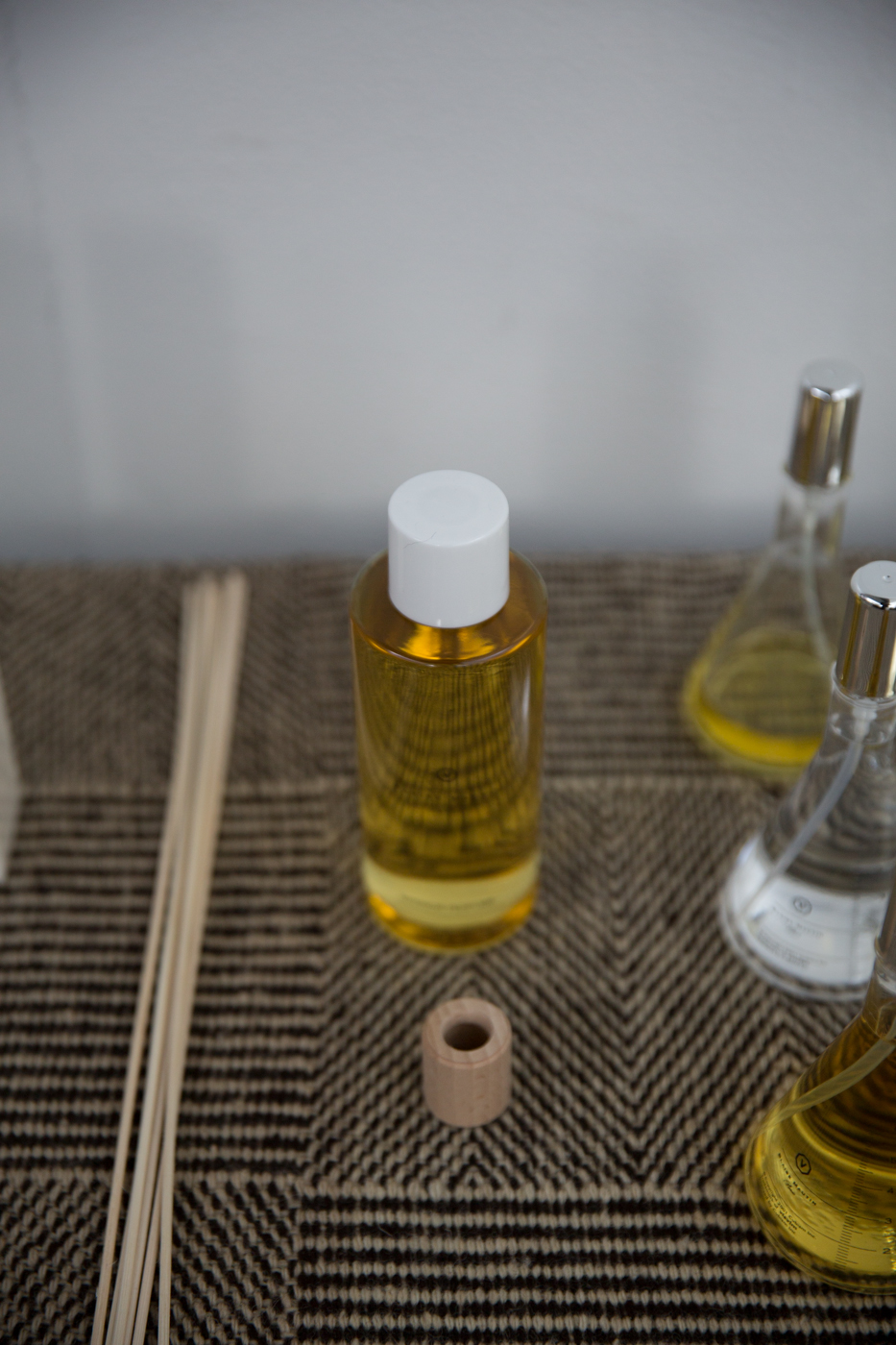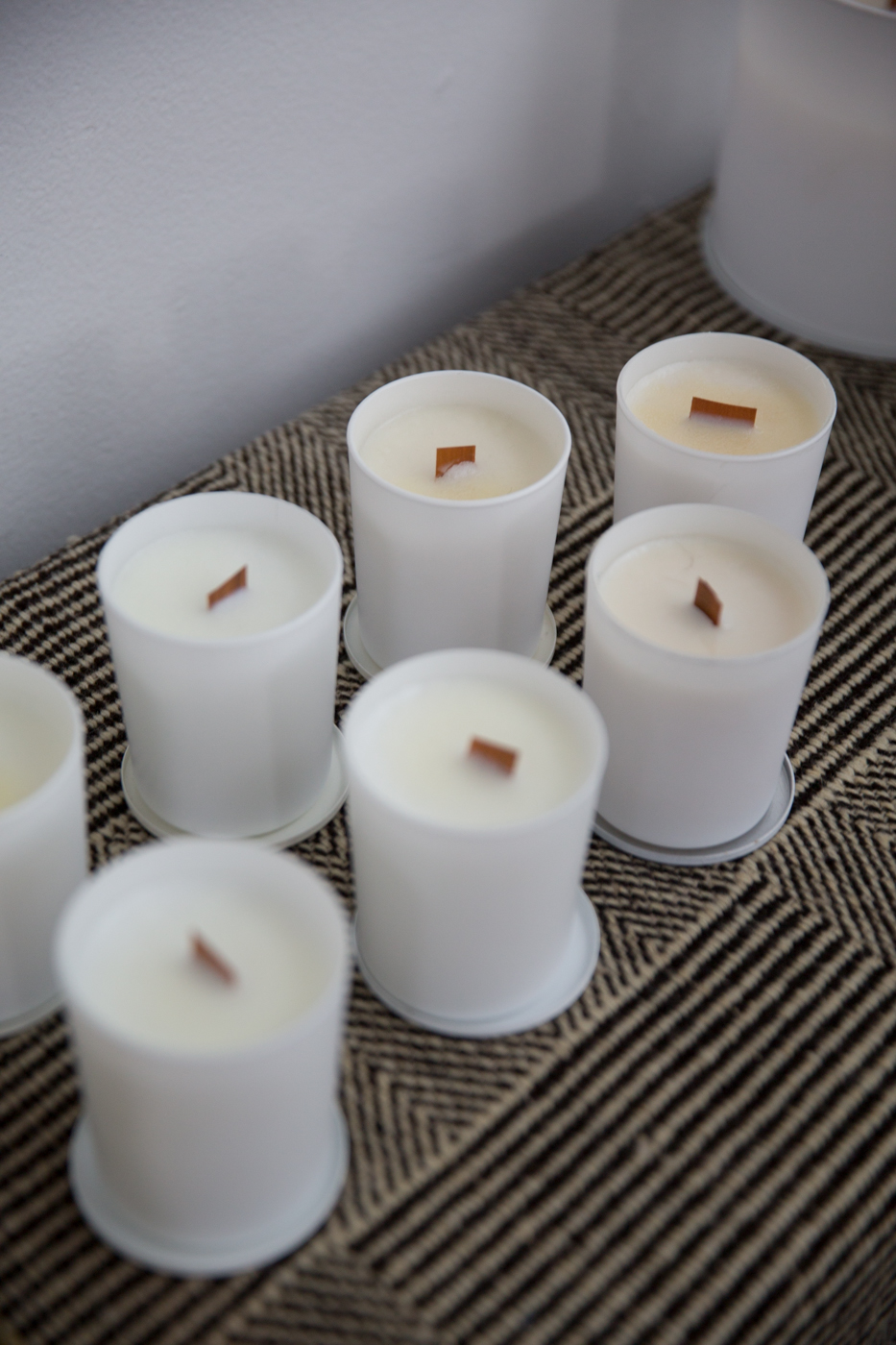Document’s Emily Singer and Ronald Burton sat down with Mautin at the Visvim Fall 2015 presentation to discuss his work for the brand, and the 18th Century Scent, in particular, which best translates Visvim’s aesthetic and ideology into a fragrance.
Emily Singer—How did your relationship with Visvim come about?
Blaise Mautin—When the Park Hyatt Vendôme opened in Paris, I designed all of their products: perfumes, amenities, interior sprays, candles, wooden sticks, everything regarding scents. And then Hiroki, on one of his trips, came to Paris and stayed at the hotel and fell in love with the scents.
When he came back to Japan, he asked one of his staff, who was based in London, to contact me and to see how we could work together. And then he [the Visvim staffer] came to my studio in Paris and said “it would be great if you could design for or get involved with Hiroki’s work; we’d be very interested to have you make something for his collection.” And then, of course, I said yes, and I went to Japan to meet with him and find out what he does and to understand his vibe.
So I came to Japan and met with Hiroki and I discovered Japan, Tokyo, especially — temples, museums, and stores — and then I came back to Paris and made my first design for him. Hiroki’s wife was pregnant at the time, and then I wanted him to remember what it was like to have a new baby. So I designed a scent called Newborn, a newborn baby scent….
And then I designed No.1 F.I.L., very much on the patchouli base with these fruity bottom notes. And since then, I’ve been going to Japan once or twice a year. [Hiroki] took me to Kyoto and I designed scents for the [Visvim] store in Kyoto inspired by the Kyoto temples.
When I arrived for the first time in Kyoto, I discovered a very ancient, very old factory making incense bars and they were using wood, 1,000-year-old wood, and it smells very strongly of honey. And this is what I did for the Kyoto scent. I used a lot of honey, plus intense wood smells, to remember the scent of that wood, which is no longer used because it’s too expensive and extremely rare. But because I had the chance to smell it, I designed this scent to remember the essence bars they use in temples in Kyoto.
Emily—Regarding the 18th Century Scent, what’s the make-up of it? What are the key scents?
Blaise—Well, one day Hiroki came to me and said, “I would like have [something that expresses] the idea of what 18th century fragrances smelled like.” The perfumers had very few products available back then. There were no more than 20 products — essential oils — the perfume designer could dispose of. It was very limited. So the first thing I tried to explain to Hiroki was, the Queen of France Marie Antoinette’s favorite perfume was rose, so I brought him the essential oil available during the 18th century. I have it here, and you’ll see what it smelled like.
Emily—Is it so different from today’s oils?
Blaise—You’ll see. It’s the process. It’s amazing.
Blaise dipped a paper testing strip into the pure rose essential oil and passed it around. The scent is denser, richer, and more complex than contemporary rose oils, and even fresh rose petals, to the point that the two hardly resemble each other.
Blaise—It’s in the process of extinction. That was an 18th century perfume. It’s amazing. Don’t forget that people did not take showers during the 18th century. In Versailles, there was not one bathroom. People did not wash. Louis XIV maybe had one bath in his entire life, in 75 years.
Also, perfume was very expensive because these products were very difficult to obtain. To make the rose oil, you need to have nine tons of rose petals to make 1 kilo of [oil], so the price is super high, and that’s why it was so luxurious to own perfume. Only the kings and queens could have this kind of measure. Nobody really could buy it; it was too expensive.
So Hiroki asked me, then, to work on this product based on the 18th century to show to people what the quality was like. And it’s very important to understand what kinds of scents we are using, because when you use products like this in your fragrance composition, it’s another world, it’s another dimension. It takes you somewhere else, it brings you somewhere else. And that’s what I love about my job, is having customers understand this.
It’s really important to me that customers understand that using expensive products like this is necessary, because if we do not use these products anymore, nobody will work with them anymore, and quality will just go down and down and down. And we need luxury and we need quality products because people are working very hard to make them. So if the perfume designer thinks it’s too expensive to use a very rare, traditional oil, what are we going to do?
What’s most important is the scent, more than the packaging or anything else. We can’t forget this. That’s why Hiroki is very logo-free and uses very simple packaging. Beautiful packaging isn’t the discussion. What is important is the product, product, product, and that’s it, that’s all we need to live with. And I hope this philosophy applies to all of my customers.
Ronald Burton—I think that also ties into the message with the clothing, how it’s about the quality. It’s not about the big show or the big advertising, it’s really geared toward someone who really appreciates.
Emily—It’s the art of the tradition of clothing.
Ronald—I think it’s something that’s an amazing thread throughout the Visvim brand as a whole.
Blaise—And it’s important because then you give a memory to people. They take this scent back home and they live with it and they get joy from it, and they remember the brand and they remember everything that goes into it.
[…]
Ronald—How long does it take you to come up with these scents?
Blaise—It’s a lifetime of experience, because when I started from day one, until I die, I’m learning. Everything is the result of new experience, and you always discover new approaches to designing scents. It’s not just something you know. You never know. You just experience, and you search and you go on different paths and then sometimes these paths take you somewhere surprising, and sometimes you really love it. The customer also gives you big hints — they like this and this, but they don’t like that, and then you experiment given those restrictions.



















